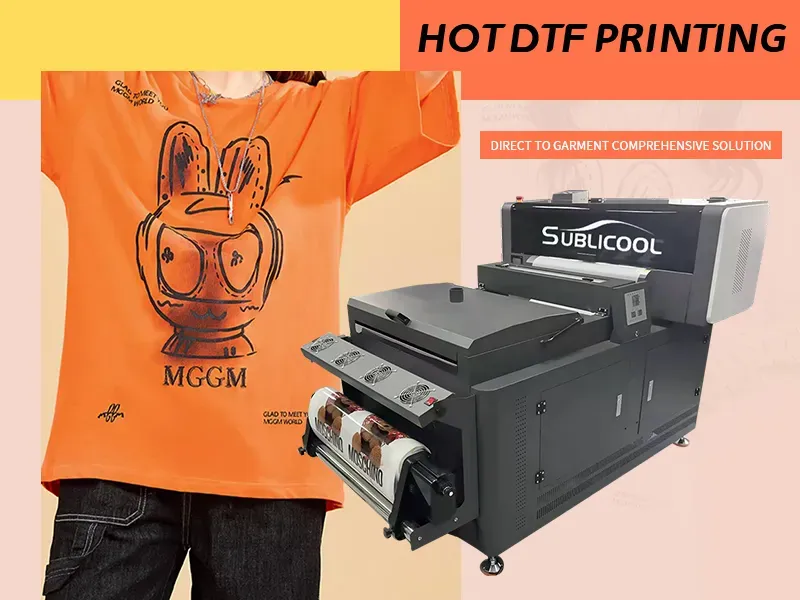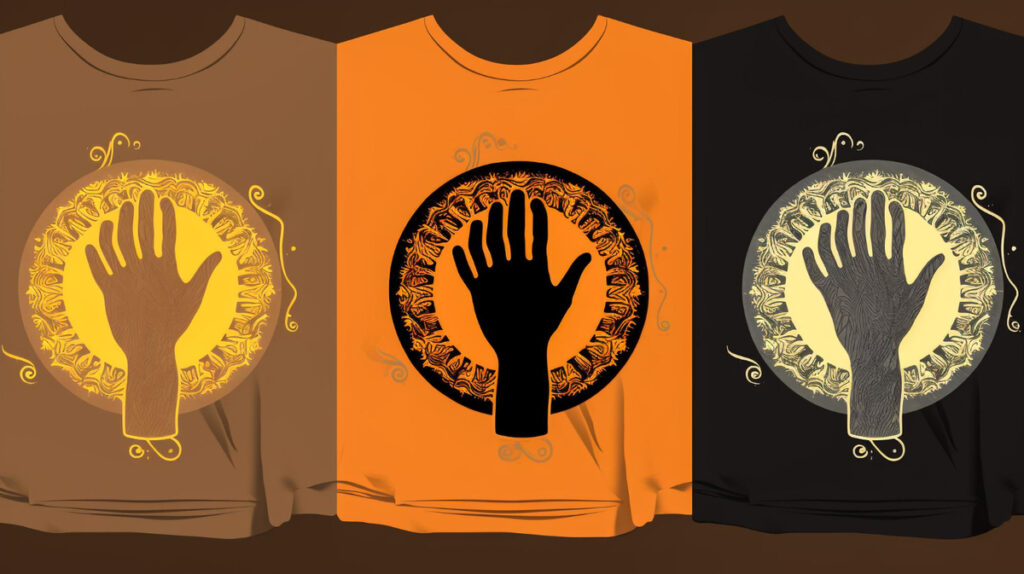DTF technology, or Direct-to-Film technology, is revolutionizing the textile printing landscape with its innovative design transfer approach. This cutting-edge method not only enhances the way we create custom fabrics but also supports sustainable printing practices that align with environmental goals. By enabling high-quality digital textile printing, DTF technology is a game-changer, proving essential for manufacturers and designers looking to produce vibrant and durable prints. Unlike traditional methods, it minimizes waste and resource consumption, thereby appealing to eco-conscious businesses and consumers alike. In this exploration, we delve into the transformative effects of DTF technology on modern printing, highlighting its versatility and market impact.
Exploring the realm of Direct-to-Film printing, we uncover a multifaceted technique that has emerged as a key player in the digital textile printing sector. This contemporary approach allows for seamless design applications on a variety of materials, making it suitable for diverse product ranges from fashionable apparel to promotional items. Often regarded as a sustainable alternative, DTF technology significantly reduces environmental impact compared to older textile printing processes. Additionally, its efficiency and adaptability cater to the rising demand for personalized and on-demand products, positioning it as an essential tool for modern manufacturers. As we investigate further, we’ll assess the implications of this technological innovation for the future of textile printing.
The Role of DTF Technology in Sustainable Printing
DTF technology stands at the forefront of sustainable practices in the textile printing industry. Unlike conventional methods such as screen printing, which often rely on excessive water usage and harmful chemicals, DTF printing champions eco-friendliness. By utilizing high-quality inks that are eco-compliant, DTF technology minimizes waste throughout the printing process, aligning well with the growing consumer preference for sustainable products. As brands become more conscious of their environmental impact, DTF offers a viable alternative that marries fast production times with low environmental footprints.
Moreover, sustainable printing through DTF technology means that businesses can produce vibrant, custom designs on-demand. This shift towards on-demand printing significantly reduces the need for large inventories, thus diminishing waste. With the ability to create personalized garments without the traditional overheads associated with mass production, companies can significantly lower their carbon footprint while meeting the specific needs of their customers. This balance of innovation and sustainability is driving the textile printing industry towards a more responsible future.
Exploring the Versatility of DTF in Digital Textile Printing
DTF technology exemplifies versatility in the realm of digital textile printing. This innovative method allows for high-quality prints on a plethora of fabrics, including versatile materials such as cotton, polyester, and even leather. This flexibility not only broadens the potential applications of printed designs, from fashion to promotional items, but also ensures that businesses can cater to varied market segments without investing in specialized equipment for each textile type. This adaptability has made DTF a preferred choice for many printers looking to expand their service offerings.
Furthermore, the ease of use involved with DTF printing means that even small-scale operations can enter the market and thrive. By producing custom fabrics without the complexities associated with traditional screen printing, entrepreneurs can set up printing businesses with lower capital investment. This democratization of the printing process ensures that creativity is not hampered by financial constraints, allowing more individuals and companies to bring their artistic visions to life.
Market Trends Influencing DTF Technology Adoption
The notable increase in consumer demand for personalized and eco-friendly products is a major trend influencing the adoption of DTF technology in textile printing. With consumers increasingly seeking unique, tailored clothing items that reflect their personal style, DTF printing provides the perfect solution. The capability for rapid turnaround times on custom designs appeals to both consumers eager for personalization and businesses looking to stand out in a saturated market. This trend is further enhanced by e-commerce platforms that support on-demand services, reinforcing consumer preference for individualized products.
Additionally, the rising awareness of environmental issues has led many brands to prioritize sustainability. As a result, DTF technology’s minimized environmental impact makes it an attractive option for businesses aiming to align their operations with eco-friendly practices. Brands incorporating DTF technology into their printing processes can not only meet consumer expectations but also enhance their brand image as responsible and innovative.
Technological Innovations Driving the DTF Process
Advancements in technology play a critical role in enhancing the DTF printing process. Innovations in ink formulation and application not only improve print quality but also enhance production efficiency, making DTF a competitive choice compared to traditional methods. The integration of powder adhesives has made the transfer process faster and more reliable, resulting in richer colors and greater durability in prints. These innovations enable printers to achieve superior results, ensuring that their products meet the high standards expected by modern consumers.
As technology continues to evolve, companies involved in DTF printing are finding new opportunities to increase productivity and reduce costs. Machine upgrades and software integrations designed specifically for DTF printing are vital in streamlining operations and improving output. This not only translates to better productivity but also allows businesses to respond more quickly to market demands, reinforcing the practicality of adopting DTF technology in various textile printing applications.
DTF Technology’s Impact on On-Demand Printing Solutions
The rise of on-demand printing represents a transformative shift in the textile printing landscape, and DTF technology is at the heart of this movement. By enabling businesses to produce custom designs as orders come in, DTF provides a flexible solution that reduces the need for extensive inventory management. This responsiveness eliminates the risk associated with overproduction and under-selling, which has traditionally plagued many textile printing businesses.
Moreover, on-demand printing powered by DTF technology allows brands to focus on niche markets. By catering to specific consumer needs and preferences without the burden of large-scale production, businesses can test new designs and adapt quickly to trends. This agility not only enhances cash flow but also contributes to a more sustainable business model that resonates with modern consumer values, where personalization and eco-consciousness are paramount.
Looking Ahead: Future Trends in DTF Technology
As we look to the future, DTF technology is poised to become even more integral to the textile printing sector. Emerging trends, such as hybrid printing techniques that combine DTF with traditional methods, indicate a shift towards more integrated manufacturing processes. This evolution represents an opportunity for brands to expand their offerings and reach diverse customer segments by leveraging the strengths of both digital and conventional printing technologies.
Furthermore, as smart fabrics gain traction in the market, the potential applications for DTF technology will likely expand. The fusion of textile printing with smart technology has the potential to redefine functionality and aesthetics in clothing. Companies that keep a pulse on these trends and invest in innovations surrounding DTF will not only stay competitive but will also be at the forefront of a rapidly evolving textile industry.
Frequently Asked Questions
What is DTF Technology in textile printing?
DTF Technology, or Direct-to-Film printing, is an innovative approach in textile printing that involves printing designs onto a special transfer film, which is then applied to fabrics using heat and pressure. This technology enables high-quality, vibrant prints on various textiles, including synthetic materials like polyester.
How does DTF Technology impact sustainable printing practices?
DTF Technology promotes sustainable printing by minimizing waste and reducing the use of harmful chemicals compared to traditional methods like screen printing. It utilizes digital processes that require less water and energy, aligning with contemporary demand for eco-friendly practices in the textile industry.
What are the benefits of using DTF Technology for custom fabrics?
Using DTF Technology for custom fabrics allows for high-quality, vibrant designs to be printed on-demand without the need for large inventory. This flexibility supports personalized designs while reducing costs associated with excess materials and storage, making it ideal for businesses aiming to meet unique customer needs.
How does DTF Technology compare to digital textile printing methods?
DTF Technology is a subset of digital textile printing that specializes in creating detailed designs on a transfer film. While some digital methods print directly onto fabric, DTF offers increased versatility and quality by allowing transfer to a wider range of materials, including those that are challenging to print directly.
What market trends are emerging with DTF Technology?
Emerging trends within DTF Technology include the increasing shift towards on-demand printing services and the development of smart fabrics. As e-commerce grows, DTF allows businesses to respond rapidly to personalized order demands, integrating advanced technologies for modern textile solutions.
Why is DTF Technology considered a game-changer for textile printing?
DTF Technology is regarded as a game-changer because it combines high-quality, vibrant printing capabilities with sustainability and cost-efficiency. Its innovative approach reduces financial burdens on businesses, meeting the growing consumer demand for customization and eco-friendly practices in the textile printing market.
| Key Feature | Description |
|---|---|
| Innovative Design Transfer | DTF technology prints designs onto special film for high-quality textile transfer. |
| Versatility | Adapts to various markets including fashion, promotional products, and custom merchandise. |
| Environmental Sustainability | Minimizes waste and avoids toxic chemicals compared to traditional printing methods. |
| On-demand Printing | Allows businesses to produce custom designs as orders come in, reducing inventory costs. |
| Technological Innovations | Advancements like powder adhesives enhance speed and quality of prints. |
| Future Trends | Integration with hybrid technologies and e-commerce growth enhances DTF’s market relevance. |
Summary
DTF Technology is revolutionizing textile printing by meeting the modern demands for customization and sustainability. This innovative approach allows businesses to efficiently produce high-quality prints with minimal environmental impact, making it a preferred choice in today’s market. As the industry embraces technological advancements and the shift towards on-demand services, DTF technology stands at the forefront, guiding the future of textile manufacturing. Its capacity to adapt to consumer needs while aligning with eco-friendly practices ensures that it will remain a pivotal player in the textile printing landscape.



